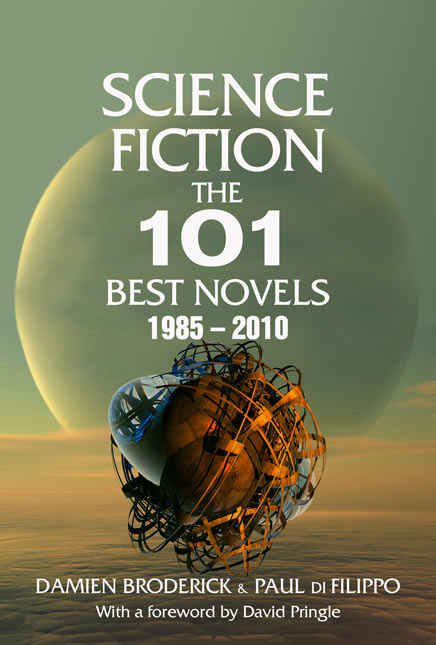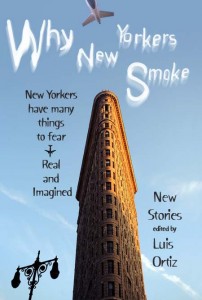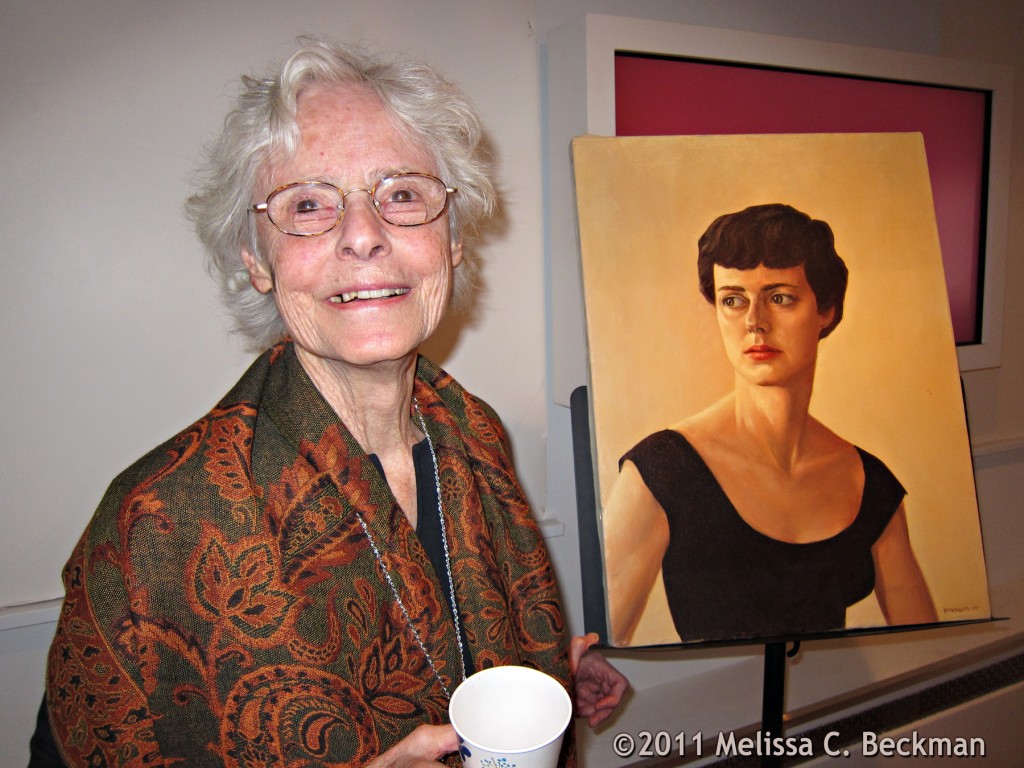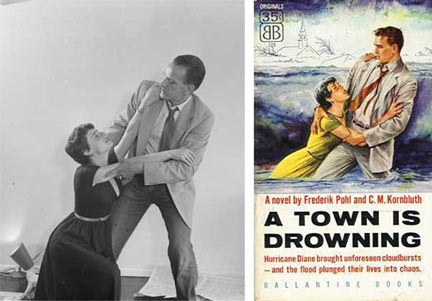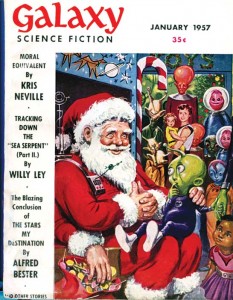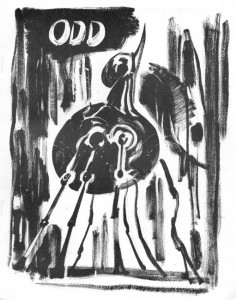YOU CAN see and hear Scott Edelman read his new story “In A Strange City Lying Alone” from our new anthology Why New Yorkers Smoke at his blog site. The reading took place at this year’s World Science Fiction Convention in Reno, NV. The book is now shipping.
NONSTOP PRESS is proud to announce the acquisition of SCIENCE FICTION: THE 101 BEST NOVELS: 1985-2010, co-authored by Damien Broderick and Paul Di Filippo. Inspired by David Pringle’s landmark volume, SCIENCE FICTION: THE 100 BEST NOVELS, which appeared in 1985, this volume will supplement the earlier selection with the authors’ choice of the best SF novels issued in English during the past quarter-century. David Pringle will provide a foreword, and publication will occur in early 2012. Some of the selections from 1992:
25 Stephen Baxter, Timelike Infinity
26 Richard Calder, Dead Girls
27 Steven Gould, Jumper
28 Maureen F. McHugh, China Mountain Zhang
29 Kim Stanley Robinson, Red Mars
30 Vernor Vinge, A Fire Upon the Deep
31 Walter Jon Williams, Aristoi
32 Connie Willis, Doomsday Book
Shown above is the jacket design by Luis Ortiz.
A
B
C
D
WE ARE GETTING ready to release our new collection of topical SF&F stories WHY NEW YORKERS SMOKE (New Yorkers have many things to fear – Real and imagined) and it appears that some of the sales reps are reporting back to us that a few booksellers don’t “get” the cover to the book (image D). We had some alternate designs created and decided to let our readers select which one they like the best. We will randomly select ten people that respond to receive a copy of the book as thanks for their feedback. Send your pick (A, B, C or D) to nonstop (at) nonstop-press.com. You can click on each image of a book to get a larger view. We will notify winners by email before the publication date of September 2011.
The Editors
(Editor’s note: This interview by L.H. Salant took place in 1997. I commissioned it for the magazine I was editing at the time but the piece never made it into print. This is its first publication anywhere.)
CAROL EMSHWILLER has been writing fiction since the mid 1950s and is known today as a premier author of short stories. Her three published collections, Joy in Our Cause, Verging on the Pertinent, and The Start of the End of It All, showcase her remarkable talent for creating a spectrum of worlds revealing the numerous idiosyncrasies of human (and sometimes other) life. While much of her work falls within what’s traditionally labeled science fiction, Emshwiller has published close to half of it in literary magazines—her writing experiments with voice, language, and plot often enough to mark her as a true (and gifted) original. More recently she’s turned to novels as a form of expression. Ledoyt, her most recently published longer work, will be followed in July of 1998 by its sequel, Leaping Man Hill. Emshwiller has been living in New York City area for her entire writing career. A native of Michigan, she met and married artist and illustrator Ed Emshwiller. Their marriage eventually evolved to a bicoastal relationship-because of his increasing involvement in both teaching art and in the medium of film, Ed settled in California while Carol remained in New York to write and teach writing as well (in fact, she was my writing instructor in the early ’80s). Only a few years ago her husband died, and Emshwiller underwent a significant transition both in her life and in her approach to writing. Today Carol Emshwiller not only retains her status as a writer of note, but has broadened her range and her appeal to readers of science fiction, unusual mainstream fiction, and now, interestingly enough, westerns.
L.H. Most of your writing over the last forty years or so has been in the short story format. What would you say accounts for that?
CAROL It has to do with the perspective I had before Ed died. While before, I didn’t really think of writing a novel, now, I can’t not write novels. The whole spirit of how I do things now is very different. Even my first novel, Carmen Dog, written before his death, is really more of a series of pieces, kind of like the “Perils of Pauline”; you get to the end of one peril and go to the next one. After my husband died, I started reading novels, which I hadn’t done much of before. And I felt I wanted to write in that form.
L.H. Why is that?
CAROL I think it was because my spirit changed. It’s somewhat hard to explain—I opened up to possibilities I hadn’t seen before or hadn’t considered before.
L.H. What had you been considering while you were still doing only short stories?
CAROL I was more precise in my writing. Short stories don’t allow you to be long-winded; you can hardly do any asides. You have to make every word count. It’s a different way of thinking, a different technique. Read more
ON APRIL 12 Carol Emshwiller joins the ranks of writers still active past 90 years of age. A few writers already in this stratospheric range are Jack Vance (94), Frederik Pohl (91), Ray Bradbury (90), and Doris Lessing (91). All of these authors save one had their first works of fiction published in pulp magazines. (Lessing, a British subject born in Iran, is the only one to bypass a pulp apprenticeship—the start of her career might have been very different if she were American.) All of these writers also write science fiction. (Is there something in the science fiction water that leads to longevity?) The secret power of science fiction is that anything is possible. The genre is, after all, basically a reckoning with an explicit future using an implicit past and present. Emshwiller writes in the foreword to her new book The Collected Stories of Carol Emshwiller, Vol. 1, that, “One thing I like best about science fiction, though I can’t always do it, is that you can write a story that makes comments on our world here and now. I think the best science fiction does that—gives us a new view on what our world is like right now. Often from an alien point of view.”
All of the aforementioned writers have embraced what Michael Chabon has labeled “trickster literature.” Chabon defines a trickster as “always associated with borders, no man’s lands, with crossroads and intersections. Trickster is the conveyer of souls across ultimate boundaries….” Chabon also talks about how some of the best writers from the past seventy-five years have been drawn to these genre borderlands. He mentions Borges, Calvino, Pynchon, Vonnegut, Millhauser, and Cormac McCarthy, but Chabon overlooks writers such as Vance, Pohl, Bradbury, and Emshwiller, who began working within these borderlands when the region was just a frontier.
Emshwiller’s first story appeared in a mid-1950s issue of Smashing Detective, her most recent this month in Asimov’s Science Fiction Magazine. In between she has published over a hundred pieces of fiction in such diverse places as Transatlantic Review, New Directions, Croton Review, Twilight Zone Magazine, The Village Voice Literary Supplement, Omni, The Little Magazine, Cavalier, The Magazine of Science Fiction & Fantasy, and many other publications encompassing the full map of the literary landscape. Closer to the trickster’s native origins she has even written westerns.
At the end of her foreword to The Collected Stories, Emshwiller writes, “I’ve never known quite what to call my writing. When I’m boasting I call it Magic Realism… and some of it is…. It’s often fantasy, though lots of it is actually science fiction.”
Emshwiller has long traveled the off-roads of the trickster’s borderlands.
_____________
There will be a celebration of Carol Emshwiller’s 90th Birthday in NYC on Tuesday, April 12th at The SoHo Gallery for Digital Art, 138 Sullivan Street, (between Houston & Prince St.) – Doors open 6:30 PM. $7 suggested donation.
(Photo: Carol in front of her Levittown, New York home in 1951.)
WE JUST RECEIVED a few advanced proof copies of THE COLLECTED STORIES OF CAROL EMSHWILLER, the first of two volumes, and man, does it ever look sharp. Five hundred-seventy-six pages, eighty-eight stories and 300,000 words starting with the first piece of fiction she sold in November of 1954, “Built for Pleasure,” up till her superhero homage “Grandma” in 2002. Emshwiller’s fiction cuts a straight path through the landscape of American literary genres: mystery, speculative fiction, magic realism, western, slipstream, fantasy and of course science fiction. This is one book we really are proud to be publishing. The limited first-edition hardcover is on scheduled to ship the first week in April. Let us know if you would like to have a copy – signed by Carol – reserved for you.
(Image: photo of Carol and Ed Emshwiller posing for cover to A Town Is Drowning, art by Emsh, c. 1955.)
THIS CHRISTMAS season I’ve visited many bookstores, as I usually do while looking for gifts. In the big B&N off Union Square I see many non-book items for sale. No so many years ago this would have bothered me. Why is a bookstore wasting space on non-books items? Today, I find I don’t mind at all. I’m old enough to remember when Macy’s and other large department stores had a book section. Today Macy’s does not concern itself with selling books and it seems that all bookstores are now selling games, knickknacks, t-shirts, mugs, boxes of chocolates, and e-book readers. And you know something – it’s all good. It doesn’t even matter if this sort of variety store business model will allow them to keep their doors open or not. Of course if e-books and Amazon or Google do take over the book market, as the business media keeps reporting, and Borders and B&N eventually go out of the paper book selling business, that still leaves billions of paper books out there that are not just going to disappear overnight, and since people still like to browse in a store-like environment I believe that there will be a return of small, independent bookstores – much like the Strand in NYC– filled with honest-to-God used books and even print-on-demand presses in the store. This will be a return to old days when people that love paper books ran bookstores. And after e-books do take over, I think the day will come when shelves filled of paper books will be seen as adding a classy status to the home.
I expect that a lot of e-book readers, and e-books, will be sold this Christmas. But I know that a house filled of books is a peaceful place to be. May your home be fill of books. And all this is my way of saying “Have a happy holiday” to all our readers.
(Image: Cover art by Ed “Emsh” Emshwiller from Infinity X Two ; Emsh painted his wife Carol holding their daughter Eve into the background of the picture)
I RECENTLY BROUGHT a copy of FANZINES by Teal Triggs (Chronicle Books). Its concept is similar to a book project that I’ve been working on, in a start, stop, start manner, over the last few years. Triggs’ FANZINES is a profusely illustrated short history of fanzines in England and the USA, and a book that I would highly recommend to anyone who can appreciates the DIY spirits of fanzines publishers and editors. FANZINES is a general overview that attempts to cover rock, punk, Star Trek, sci-fi, feminism, politics, and comic book zines. In my own book project I am focusing on presenting the secret history of science fiction as revealed in the thousands of sf fanzines that appeared in the wake of Hugo Gernsback’s first issue of Amazing Stories (1926).
Most zines are the product of youth. I put together my first one when I was 11. (Its subject was horror movies and comic books. The print-run was 3 copies and these were shared with classmates in my homeroom sixth-grade class.) Over the years I have followed and collected many zines, along with newsstand magazines (Cult Magazines: A to Z shows some of my favorites), and I have always been amazed at the level of professional striving in sf zines. Indeed, many young sf zines publishers have grown up to become professional authors and artists and a short list of teenage zine editors would include Robert Silverberg, Harlan Ellison, and Ray Bradbury. Later in life, as professionals, many were sympathetic toward the next generation of sf zines editors who would come up to them at a sf convention begging for some small contribution of copy or art. (Of course, nowadays someone like John Scalzi will just throw up a blog on the web.) This comradeship seems to be a uniquely sf thing. (Yes I know that there are music stars that interact with zines, but this has always struck me as falling under the rubric of pr. Sf pros usually do it as a show of allegiance to the genre.)
Taking into account all of the interaction between sf fans and sf professionals it is easy to see that there is a wealth of social history hidden in science fiction zines. FANZINES has spurred me to renew my efforts on THE INTERPRETATION OF ZINES (the working title of my book).
(Top: cover to ODD fanzine by Jack Gaughan from Othermost: The Art + Life of Jack Gaughan.)
A steampunk library giveaway is now going on at TOR Books. Our own STEAMPUNK PRIME is one of the prizes. To enter, leave one comment on this post by noon on Saturday, October 30 on the Tor Books site.

